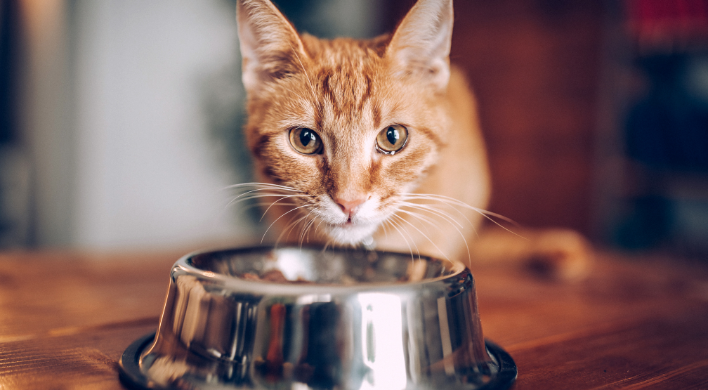
The Paper of the Month for August is from the Journal of Nutritional Science and is entitled "Determination of a steady-state isotope dilution protocol for carbon oxidation studies in the domestic cat" by Julia Guazzelli Pezzali and Anna Kate Shoveller.
Dogs may be our best friends, but cats have a plan to challenge that notion! They need our help to thrive, and it starts with good food. A key consideration for cat owners is providing their feline friends with the right food to ensure they live long and healthy lives. Amino acids, the building blocks of proteins, play a vital role in cats’ overall health and well-being. Cats are also carnivores, requiring greater amounts of protein and amino acids in their diet to thrive.
There are ten amino acids that must be included in a cat diet to support protein metabolism. However, the exact amount of each of these dietary indispensable nutrients adult cats need to consume is still unknown. One reason for this gap in our knowledge is the absence of a reliable procedure to determine amino acid requirements in adult cats. To tackle this issue, we have developed a method to measure the minimum amount of dietary indispensable amino acids that adult cats need in order to thrive.
This method, which has been employed in other species such as humans, pigs, and dogs, utilizes unique molecules called isotopes to track the metabolism of amino acids and whether those amino acids support the synthesis of proteins in the body. Stable isotopes are naturally occurring and safe to use. They are unique molecules because we can distinguish them from their original form by changing the number of neutrons. It’s like taking a bucket of white balls and coloring one red, making it easier to see and track. Because of their uniqueness, we can use isotopes to track metabolic processes. The isotope 13C-Phenylalanine (13C-Phe), which has 13 neutrons (13C) instead of the usual 12 (12C), can be used to monitor amino acid utilization by the body. When the body cannot use 13C-Phe, it breaks down and releases 13CO2. This 13CO2 can be utilized for other important functions in the body or released through the cat’s breath.
To ensure the method works, the subjects, in our case cats, must be given small amounts of 13C-Phe in small meals over the course of hours. This causes higher levels of 13CO2 in their breath until the amount becomes consistent. This consistent level of 13CO2 allows the measurement of amino acid metabolism in response to different diets. We must give the subjects the right amount of 13C-Phe to quickly reach this steady state. We start with a high dose (prime) and then give smaller doses continuously over time. As CO2 can be used by the body for other functions before being released in the breath, it is also important to provide adequate amounts of another isotope called NaH13CO3 to ensure we quickly achieve consistent 13CO2 levels in the breath coming from 13C-Phe.
Our study tested various combinations of prime and constant doses of 13C-Phe, along with different amounts of NaH13CO3 in an adult cat. The goal was to find the best protocol to achieve stable 13CO2 concentrations in the cat’s breath in a rapid and noninvasive way. We found that cats required smaller doses of 13C-Phe and higher doses of NaH13CO3 compared to dogs to achieve the desired stable levels of 13CO2 in their breath. These differences stem from how cats process protein in their bodies differently due to their carnivorous nature. The new protocol developed in our study can now be used in future research to determine the minimum amount of indispensable amino acids adult cats need.
This will help create diets that better support the health of our furry friends!
Julia Guazzelli Pezzali and Anna Kate Shoveller
